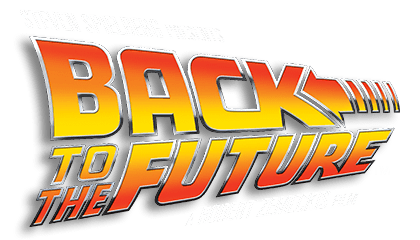Back to the Future: enabling technology 30 years on
Robin Christopherson | 23 Oct 2015Thirty years ago Marty McFly travelled ‘Back to the Future’ in the 1985 classic film and encountered a world of futuristic technology. The exact date he travelled back, 21 October 2015 has just passed, so I thought it would look at how much of what Marty McFly and Doc encountered in the film has come true, and whether or not there is a similar technology benefitting disabled people today.
 Flat screen TVs
Flat screen TVs
Obviously these are everywhere nowadays in all sizes and in high definition and 3D. While displaying a better picture and being more aesthetically pleasing than the old-style of TV, flat screens are particularly useful for those with a visual impairment who need larger screens for scale.
Artificial Intelligence (AI)
In the film McFly and his pals talked to different household devices. Today we have Siri and Cortana and we can ‘ask Google’ to complete various tasks for us. Voice-activated technology is very useful for disabled people, particularly those with a visual impairment or conditions such as arthritis.
Thumbprint door locks on the front door to the house.
We have Touch ID on our smartphones and face recognition software on Facebook photos. Biometric technology really helps people with learning disabilities easily unlock or authorise access, when otherwise they would need to deal with inaccessible CAPTCHAs or remember long, complicated passwords.
Bionics
Doc says in the film that he thinks Biff’s brain implants have gone wrong. Today we have bionic arms controlled by thoughts, bionic exoskeletons and even artificial skin covering artificial limbs that can send sense signals to the brain.
Holograms, shown in the “Jaws 19” advert
We have Microsoft’s HoloLens device which creates high-definition holograms, which could be helpful for people with learning disabilities, providing a clear visual representation. There are also many different augmented reality goggles. For blind and visually impaired people this technology can help to give us directions in our field of view, or it can enable surgeons perform better operations.
Flying cars
Not quite a reality but the TF-X is in development, which is pretty close and estimated to only take around 10 years to go into production. We do have autonomous cars (cars that drive themselves), which offer obvious benefits for disabled people who for whatever reason cannot drive a standard manually operated car even with adaptations.
Hover boards
Finally I couldn’t resist mentioning the hover boards. The most iconic and memorable technology in ‘Back to the Future’, they are not actually currently in production anywhere, although there are a couple of prototypes doing the rounds. There’s not really an assistive technology angle to a hover board that I can think of, but perhaps once they are here, there will be a life-changing benefit for someone.
In tribute to one of my favourite films, I’ll end with the wise words of Marty McFly, “I guess you guys aren't ready for that yet. But your kids are gonna love it.”
